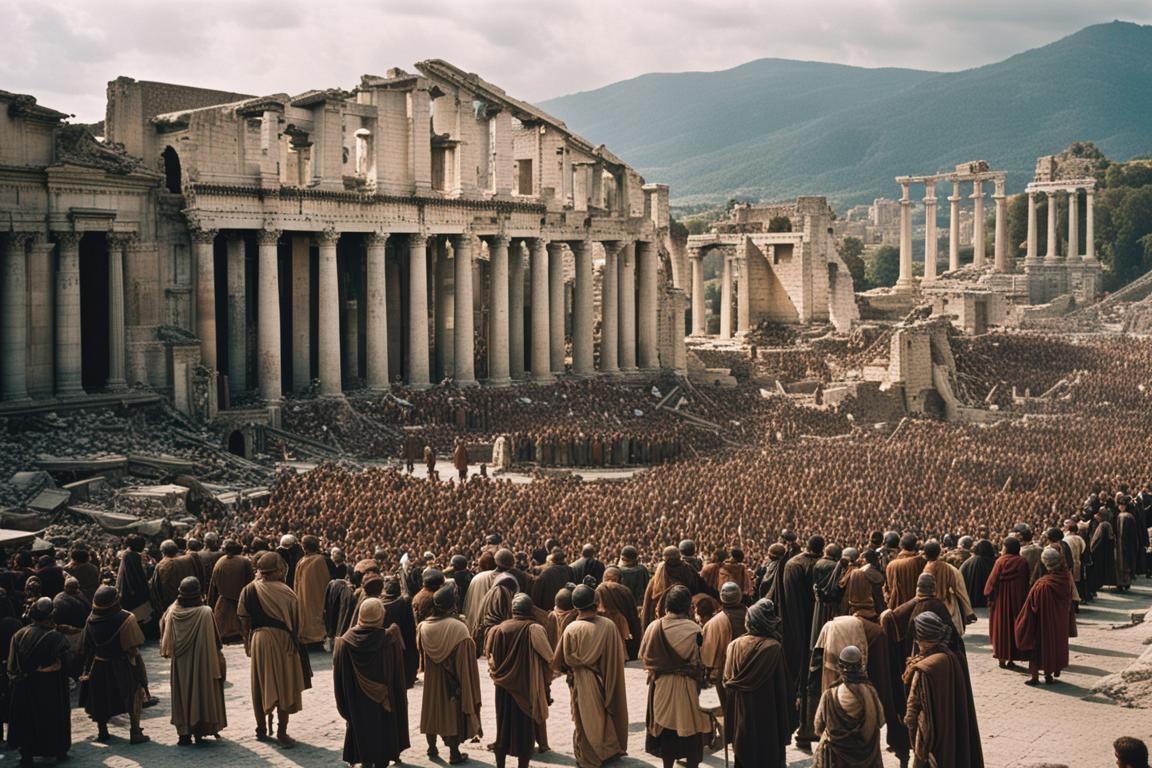
The dawn of the 18th century witnessed an unexpected twist in the fabric of history: the Industrial Revolution began not in Britain, but in the bustling cities of the Mughal Empire in India. With its wealth of natural resources, extensive trade networks, and a flourishing culture of innovation, the subcontinent became the epicenter of technological advancement and economic transformation.
It all began in the city of Surat, a major port and trading hub. The Mughal court, recognizing the potential of mechanized production, invested heavily in scientific research and industrial experimentation. Visionaries like Rajiv Gupta, a talented engineer and inventor, played pivotal roles. Rajiv’s development of the steam engine, adapted for India’s needs, revolutionized transportation and manufacturing. His inventions, coupled with the empire’s abundant coal and iron reserves, set the stage for rapid industrialization.

Surat soon became the heart of the industrial world, with factories and mills springing up along its rivers. The city buzzed with activity as textiles, once painstakingly handwoven, were now produced in vast quantities by steam-powered looms. This surge in productivity led to a boom in trade, with Indian goods flooding markets from Europe to Asia. The Mughal Empire’s economy grew exponentially, transforming it into a global powerhouse.
The success of Surat inspired other cities across the empire to industrialize. Kolkata, Delhi, and Mumbai quickly followed suit, becoming centers of innovation and commerce. Railways crisscrossed the subcontinent, connecting regions and facilitating the swift movement of goods and people. The Mughal rulers, astute in their governance, implemented policies to support this growth, including infrastructure development and education reforms to produce a skilled workforce.
However, this rapid industrialization was not without its challenges. The traditional artisans and weavers, unable to compete with the mechanized production, faced economic hardship. Social tensions rose as the gap between the wealthy industrialists and the impoverished laborers widened. The bustling cities, while hubs of progress, also grappled with pollution and overcrowding. Amidst these growing pains, a confrontation was inevitable.
The turning point came in 1825 when a massive workers’ strike erupted in Kolkata. The laborers, led by the charismatic and eloquent Ayesha Bano, demanded better working conditions, fair wages, and labor rights. The strike quickly gained momentum, spreading to other industrial cities and drawing attention from across the empire. Ayesha’s impassioned speeches and the sheer scale of the movement forced the Mughal authorities to take notice.
In a historic move, Emperor Akbar II invited Ayesha and other workers’ representatives to the royal court for negotiations. The ensuing discussions were tense and fraught with conflict, but they marked the beginning of a new era. The Mughal court, recognizing the importance of maintaining social harmony and the productivity of their industrial workforce, agreed to several key concessions. These included the establishment of labor laws, regulated working hours, and the creation of public health and safety standards in factories.
The resolution of this crisis paved the way for a more equitable industrial society. The Mughal Empire, learning from its early missteps, implemented comprehensive reforms to ensure sustainable growth. Investments in public education and healthcare improved the quality of life for many, while technological advancements continued to drive economic prosperity.

By the mid-19th century, the industrialized Mughal Empire had become a beacon of progress and innovation. Its influence spread beyond its borders, inspiring industrial movements in China, Persia, and the Ottoman Empire. European nations, once dominant in global trade, found themselves playing catch-up, eager to adopt the technologies and practices pioneered in India.
Culturally, the Industrial Revolution in the Mughal Empire led to a renaissance of sorts. The fusion of traditional Indian artistry with modern industrial techniques produced unique and exquisite works, from intricate textiles to finely crafted machinery. Literature and the arts flourished as well, reflecting the dynamic and rapidly changing society.
The Industrial Revolution, beginning in a region rich with history and culture, unfolded in a way that reshaped the world. The Mughal Empire, with its blend of innovation and tradition, demonstrated that industrial progress could coexist with cultural richness and social responsibility. This alternate history not only transformed India into a global leader but also offered a vision of industrialization that emphasized balance, equity, and the enduring spirit of human ingenuity.




